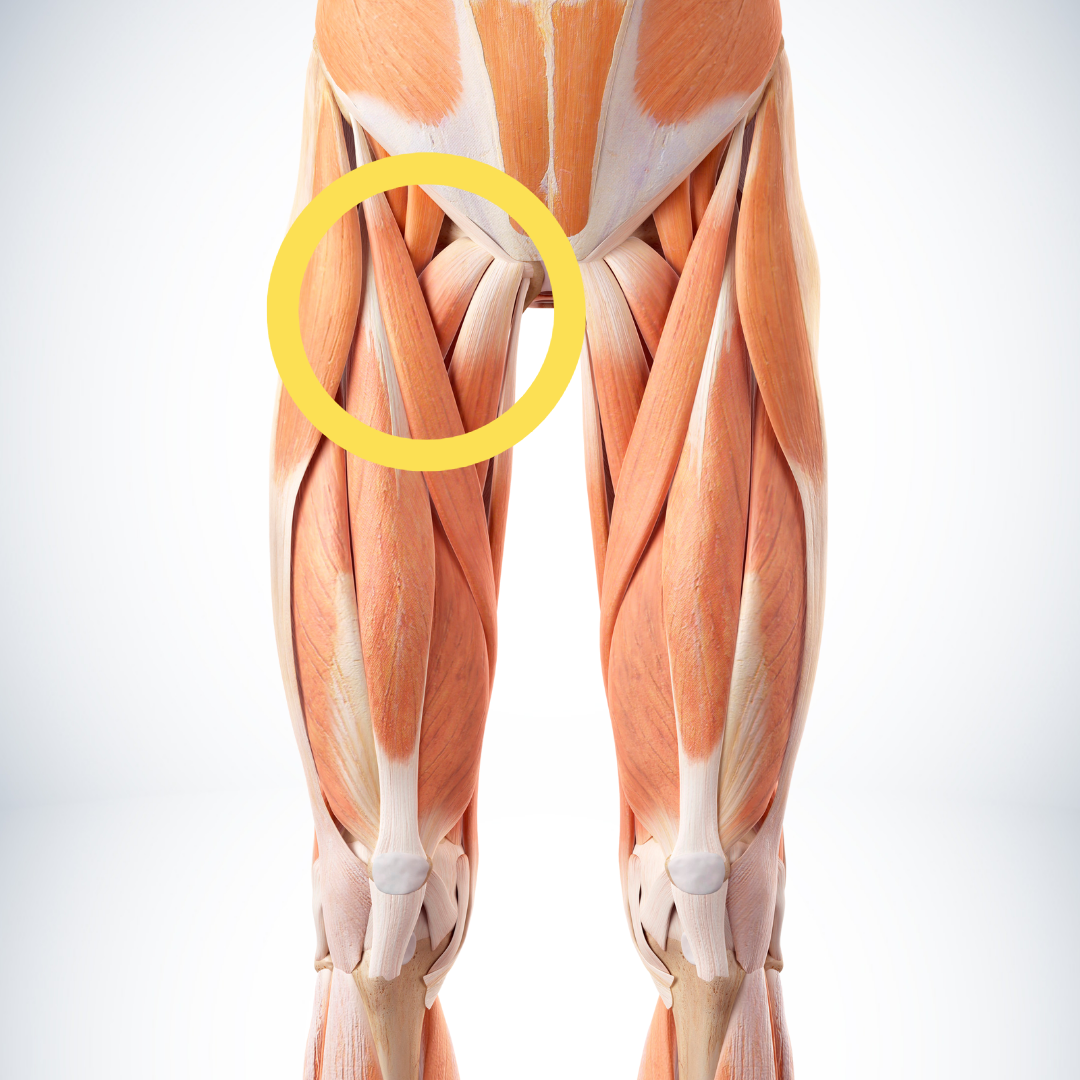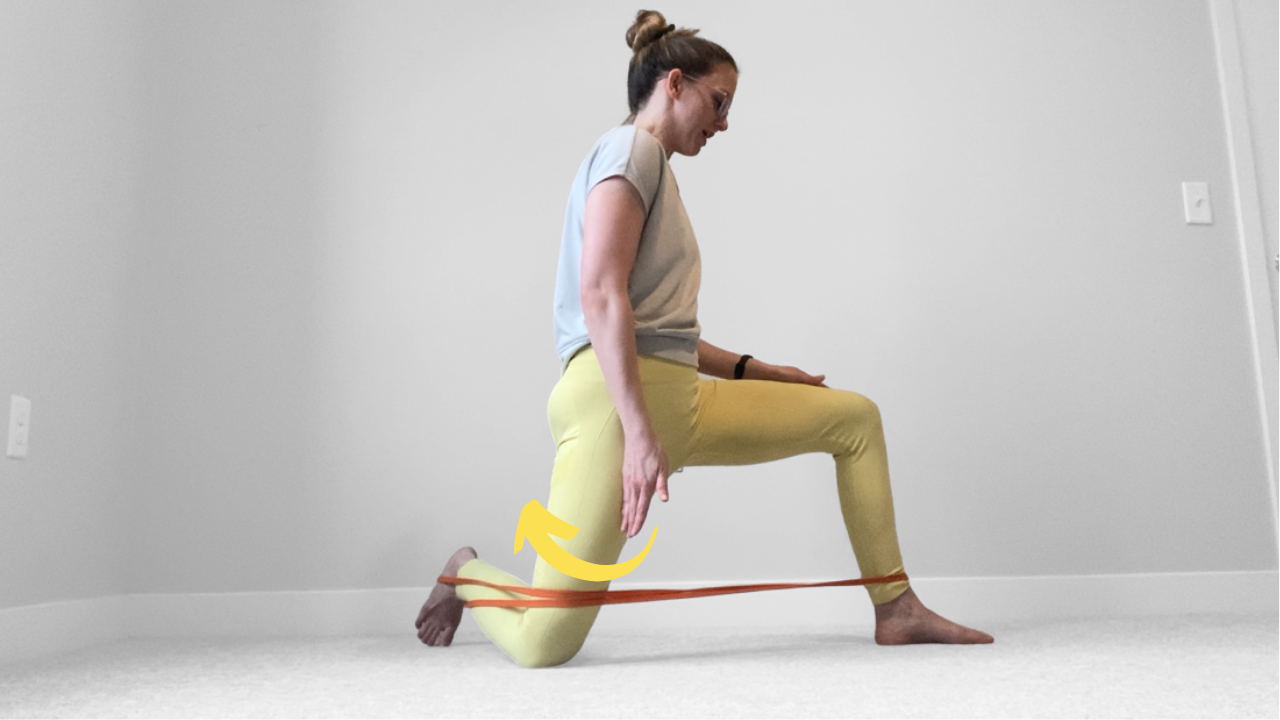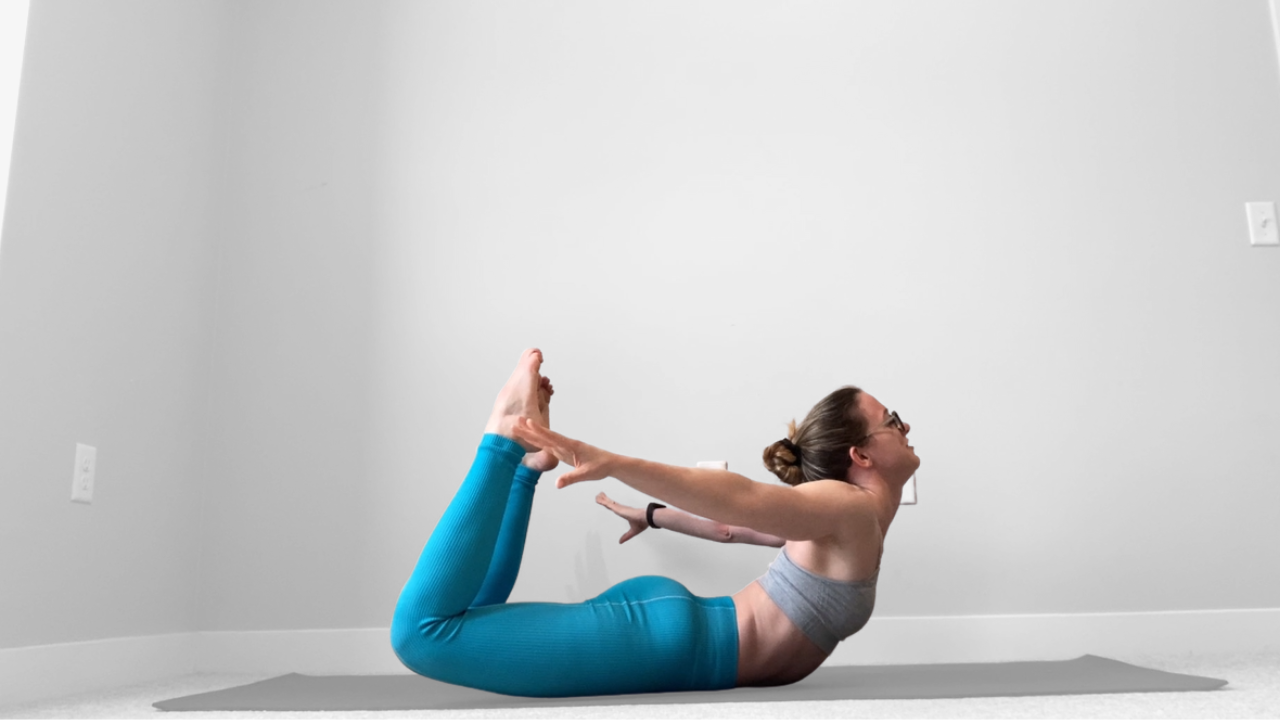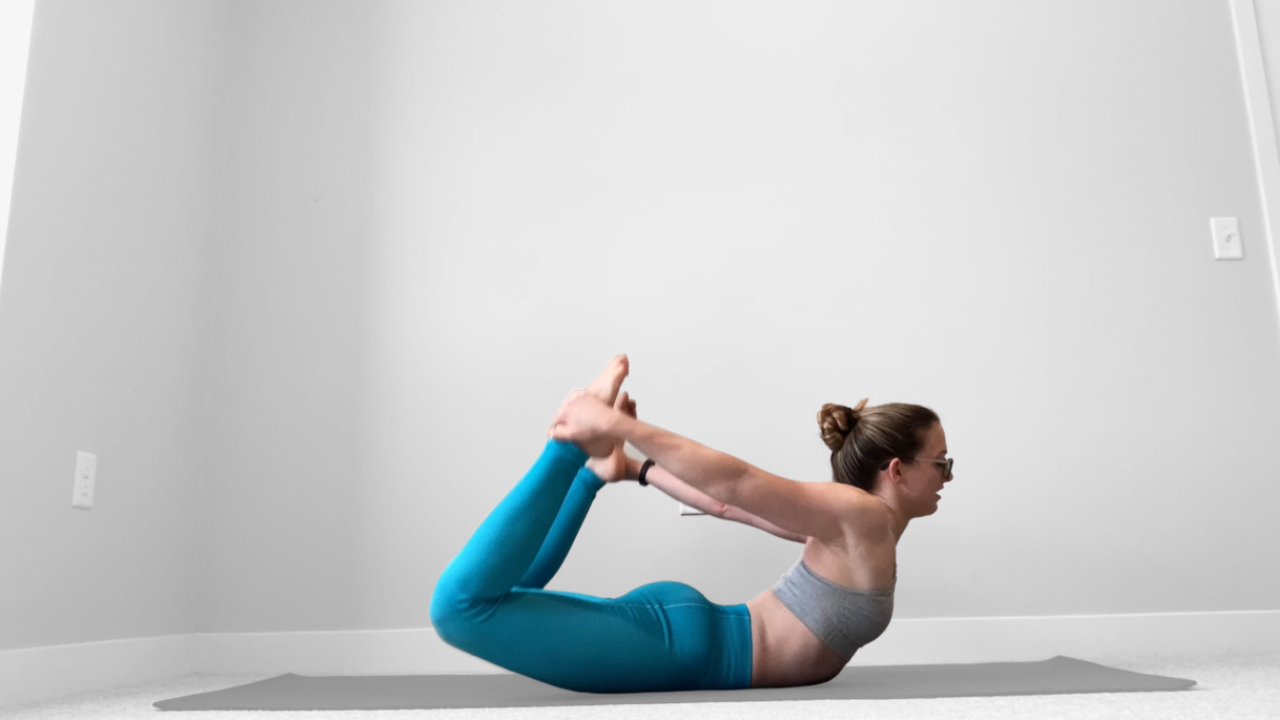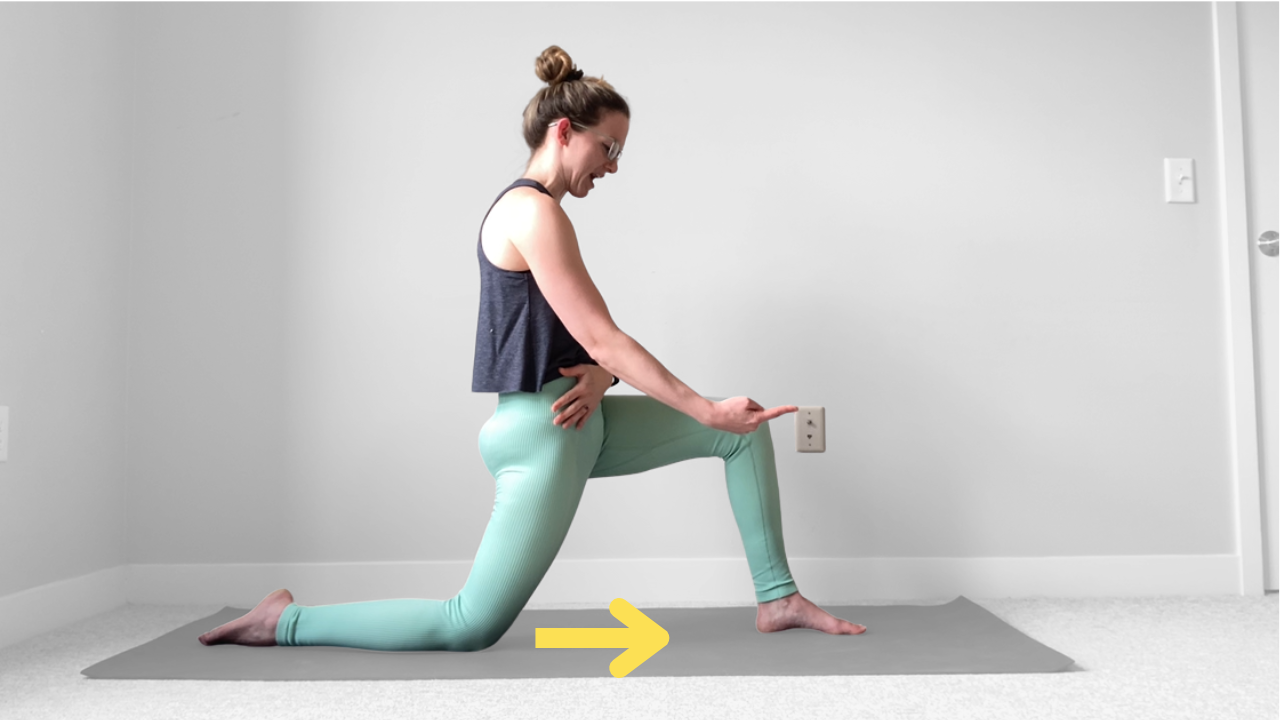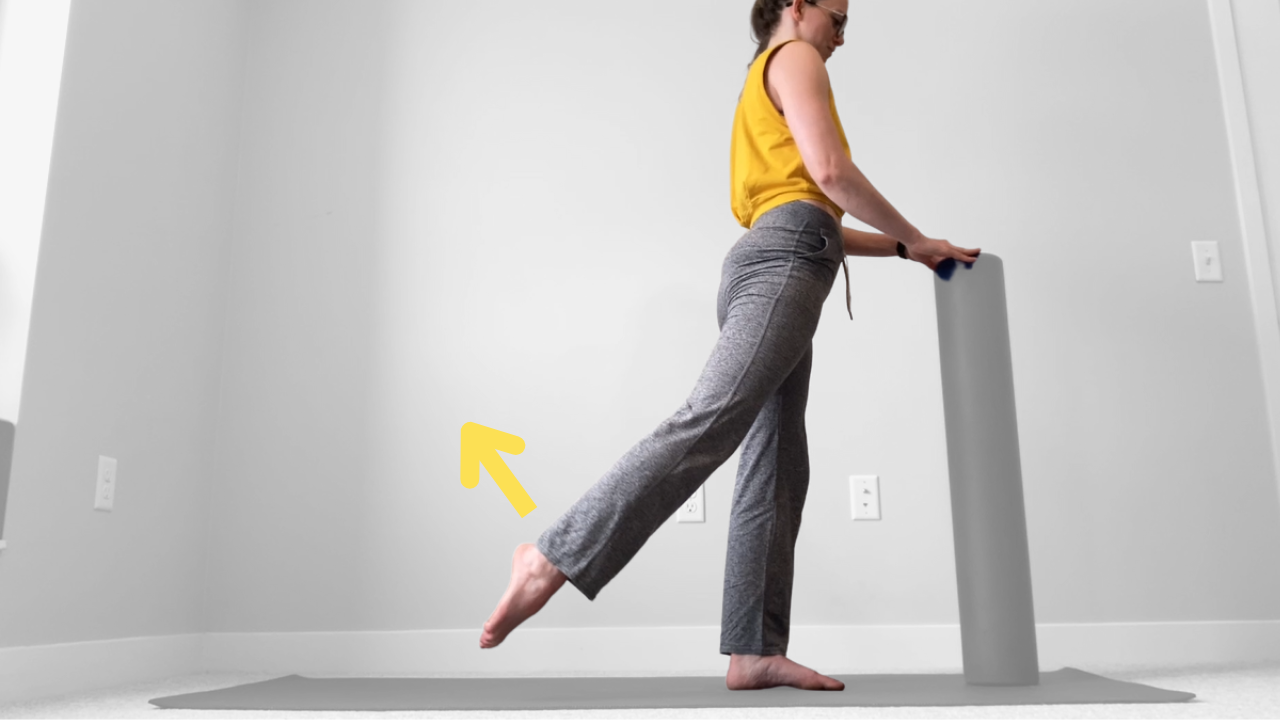Hip Flexor Stretches
Flexopedia > Hips > Hip Flexors
Flexopedia: Hip Flexors
Jump To: Overview | Considerations for Stretching | Passive Stretches | Active Stretches (Hip Flexor Focus) | Active Stretches (Glute Focus)
Our hip flexors are the muscles running across the front of our hip that we feel in a lunge, or in the back leg in a front split (they’re also the muscles that pull your hips “unsquare” when they’re tight!). For folks who sit a lot, it’s common for hip flexors to be tight/weak because they spend so much time in a shortened position.
Muscle(s) Overview:
When we talk about our “hip flexors” we’re actually talking about a couple of different muscles. Often we use hip flexors as a synonym for our psoas major and iliacus, but three other muscles also help contribute to hip flexion: the rectus femoris (that’s one of our quads), pectineus and sartorius (those are both inner thigh muscles).
Front of your hip, crossing your hip crease down into your thigh.
Your psoas major originates on the sides of your lower back vertebrae, crosses the front of your hip, and attaches to inside of the top of your femur (thigh bone).
Your iliacus originates on the inside of the top of the “crest” of your hip bone, crosses the front of your hip, and attaches to the inside of the top of your femur (along with your psoas).
The rectus femoris originates from the lower part of the front of the outside of your hip bone (the inferior iliac spine and ilium), crosses the front of your hip, runs down your thigh, and attaches to the top front of your tibia (shin bone) by way of the patellar ligament.
Joints Crossed: Hips, Knee (only the rectus femoris crosses the knee)
Primary Movement Focus: Hip flexion (lifting your knee towards your chest, or hinging at the hips)
Deepest Stretch In: Our hip flexors are elongated the most in positions of hip extension (extending one leg behind our body, or pushing our hips forwards in space)
Common Antagonist Muscle Pairs*: Glutes, Hamstrings
* An “antagonist” muscle is one that opposes the action of another. Our hip flexors are an antagonist to our glutes (which help extend the hip) and hamstrings (which also help extend the hip, along with straighten the knee). When we contract those muscles, our body is smart enough to relax our hip flexors to allow the movement to happen.
Consideration #1: The Importance of “Tucking Your Tailbone” (Pelvic Position): Our hip flexors are really good at avoiding a stretch if we let them. To ensure we’re actually lengthening our hip flexors in our stretches, we have to consciously rotate our hip bones backwards (or “tuck” the tailbone). In positions like lunges or front splits, you can think about reaching your tail bone down towards the floor, lifting your pubic bone towards the ceiling, or imagine your hip points are eyeballs and “lift your hip eyeballs to look up and forwards.” Check out this blog post for a more detailed explanation.
Consideration #2: The Importance of “Square” Hips (Pelvic Position): Just like making sure our pelvis is in a neutral (or even posteriorly tilted) position, we also want to make sure our hips are “square” and pointing forwards. This ensures that our hip flexors are being pulled longer over the front of our hip bones (this blog post goes into more detail if you’d like to learn more).
Consideration #3: Beware of Nerve Tension: Our femoral nerve is one of the main nerves running down the front of our hip and thigh. Occasionally when it feels like we have “tight” hip flexors or quads, what we’re actually feeling is nerve tension in the femoral nerve. Here’s how to test if you have tension in your femoral nerve (and some suggested nerve mobilizations to help with your training).
Consideration #4: Strengthen Both Sides of the Joint: Flexibility acquisition is all about strengthening our muscles to support a deeper (safer!) range of motion. When it comes to positions where we want our hip flexors to lengthen, that mean strengthening our hip flexors while they’re in a lengthened position as well as strengthening our glutes while they’re in a shortened position (working to help lengthen our hip flexors).
All these stretches and drills focus on engaging and strengthening our hip flexors while they’re in a stretch.
These drills focus on strengthening our glutes to support a deeper hip flexor stretch.

